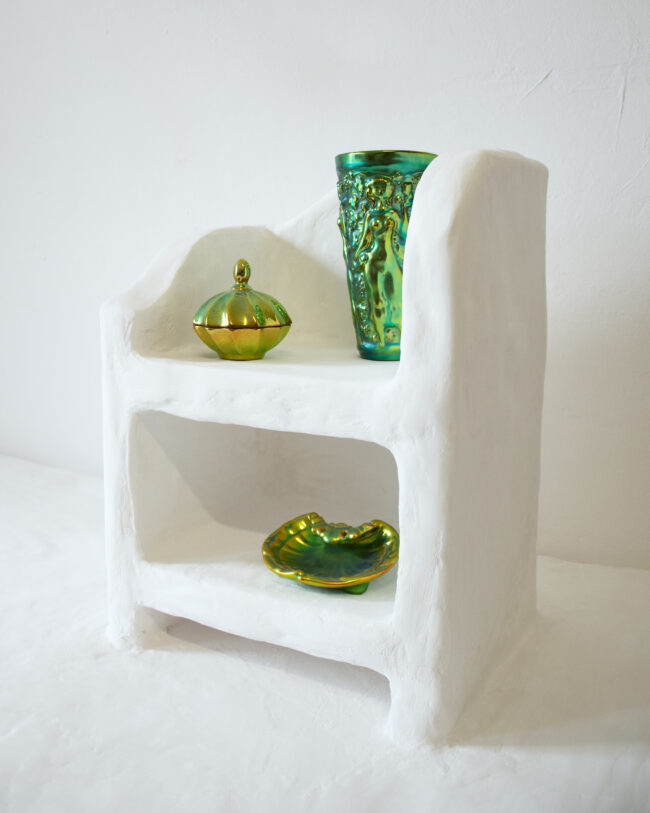“In 2023, thanks to CEAAC, Alban Turquois was awarded a research and creation grant to travel to Hungary. Based on a photograph taken by the artist Marianne Marić at a flea market in Budapest, Turquois began working with eosin, a family of enamels that he set out to discover. Recognisable by its multicoloured, metallic and iridescent reflections, similar to those of beetles, eosin is a reference to Eos, the Greek goddess of dawn. This specific glazing technique was developed at the end of the 19th century by a ceramics manufacturer directed by Vilmos Zsolnay in the Hungarian city of Pécs. Initially producing pipes and architectural ceramics, by 1893 the company was creating collections of art pieces with a shiny metallic glaze. Its rise in popularity amongst a select group of public figures up until the 1930s was a marker of refinement and elegance. Even today, the eosin glaze is still used in the original factory. The way in which it is produced, however, remains a well-kept secret.
[•••]
In Alban Turquois’s recent installation À la recherche d’Éos (2023-2024), presented at CEAAC, a complete writing cabinet serves as the basis for his study. Wrapped in white plaster, the sculpture-cum-piece of furniture, with its rounded corners, richly reveals the origins and research of this precious savoir-faire. Notes scribbled in pencil are intertwined with tests of fired enamels inlaid on the worktop, a digital photographic print on ceramic — the colour of which is surprisingly closer to the original objects than to the artist’s handmade attempts —, eosin ceramics found at the capital’s flea markets and at the official factory in Pécs, compartments bearing knowledge, built-in opalescent paintings and a tiled desk leg that has been unexpectedly fired. Much like a dorica castra, a hodgepodge of elements seem to question the ways in which knowledge is acquired by placing each source on the same level. Without ever really letting us take a seat, the artist invites us to approach these quests for knowledge as experiences to be lived.”
Text by Anne-Laure Lestage, 2024
With the financial support of the Région Grand Est

Free admission
Wednesday to Sunday : 2 pm › 6 pm
Closed on public holidays
The CEAAC Education and Outreach team will help you discover the exhibition.
Contact and reservations:
public@ceaac.org / +33 (0)3 88 25 69 70
Guided tours with the artist (in French)
Saturday 2 November at 4.30pm
Saturday 7 December at 4.30pm
Free, no reservation required.
